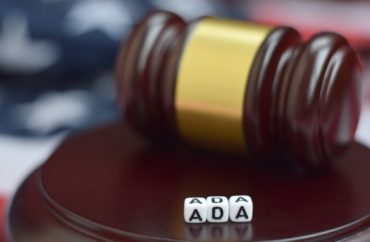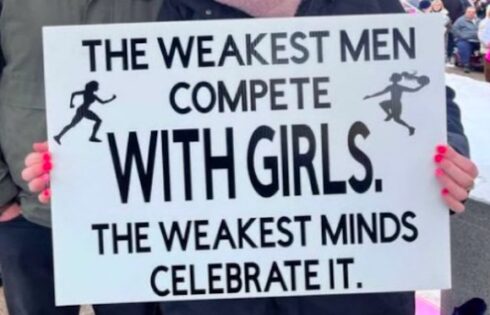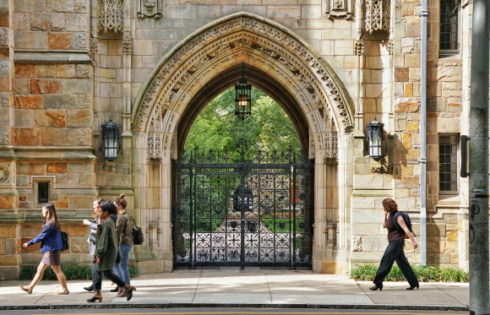
Mask mandates drive ‘pathogenic spread’
Before the COVID-19 pandemic, it was widely accepted that universities bear the responsibility of integrating learners from all reaches of the disability spectrum.
No one angrily demanded that people with mobility issues use the stairs instead of elevators or wheelchair ramps, or that full public access be denied to people with Down Syndrome or on the autism spectrum.
This expectation of accommodation has gone out the window on the nation’s campuses when it comes to a broad spectrum of exemption-qualifying disabilities, including respiratory conditions.
Innumerable students, faculty and staff are being forced to assimilate to maximalist masking policies, even though people with “contagious and noncontagious diseases” are specifically protected under federal law.
This zero-exception approach flies in the face of U.S. disability integration law, which I’ve been in charge of implementing and monitoring for compliance at a school district level.
It also ignores the detrimental health effects of prolonged mask wearing and the pathogenic spread driven by mask mandates, as I’ve learned from training in personal protective equipment for disaster relief in hazardous environs.
Our national leadership is costing people their lives by directing them to follow misguided, self-contradicting policies. We must correct rampant misinformation now to prevent catastrophic loss of life from the same failed policies in the event of a future pathogen.
ADA covers even people who are infectious
Were you to find yourself in a lecture hall with 200 classmates, you would not be privy to information about anyone else’s health.
You would not know who experienced torture, rape and abduction, nor who has asthma exacerbated by anxiety and poor ventilation. Whether your professor suffers from chronic obstructive pulmonary disease, or survived lung cancer, would be a mystery to you.
You would probably take note of the double-amputee, but I’m doubtful you’d react with animosity at the mere sight of a visibly disabled individual.
Whenever we feel triggered by the mere presence of a bare face, we should then imagine the atrocities that may lie just beneath the surface. Only at that point can we can begin to bring dignity and consent back into the conversation.
MORE: ‘This is prison’
Our universities and the public sector as a whole should also consider how many times we need to ask trauma survivors to relive atrocities to do nothing more than breathe in an unobstructed manner.
This isn’t just a sound idea. It’s a federal legal obligation that supersedes local ordinances.
Many remain unchallenged in their blanket “integration policies” for mixed groupings with unaddressed chaos variables at play. An institution that actively engages in highly discriminatory behaviors – creating a toxic, shameful atmosphere for noncompliance with arbitrary measures – cannot be seen as inclusive.
The Americans with Disabilities Act statute and regulations specify that individuals with a vast multitude of disabilities have the right to reasonable accommodation to engage with the public sector without threat, coercion or harassment. Under the law, mere presence does not constitute direct threat even if a person is contagious with a transmissible illness.
An absence of bare faces on your campus means that these rights are being trampled – and in vain.

Public health authorities ignore particle physics
In response to far higher case rates, mask-mandating cities are barking at their already compliant populations to mask harder. Consider Florida, where districts with mask mandates are performing objectively worse than areas that remain free.
Elected leaders and public health authorities have largely tuned out the voices shouting about particle physics, instead doubling down on failed policies that only increase the death toll.
The unfortunate truth is that masks, as worn in everyday situations, tend to exacerbate the spread of airborne pathogens – the inverse of what the public has accepted as effective in fighting COVID.
It’s simple, but it’s complicated. If the novel coronavirus turned out to be a droplet-based pathogen, as thought at the beginning of the pandemic, certain masks could have been a component of mitigation efforts.
It’s not – and our leadership at all levels has ignored the science for the better part of a year.
Containment protocol looks at the smallest possible particle size under pressure and considers the behavior of particulates within this range. The SARS-CoV-2 virus that causes COVID-19 is just 0.06-1.4 microns – a range in which the particulate behaves radically when aerosolized.
MORE: University COVID rules train people ‘to embrace totalitarianism’
A larger exhaled droplet from a bare face falls in a predictable six-foot arc. Put on a mask and this droplet aerosolizes in an 18-20 foot trajectory, where it remains airborne for hours. This effectively increases the viral load in the atmosphere with every exhale or plosive force generating event – such as sneezing, coughing, singing – from a contagious individual within a given space.
Had public health officials bothered to consult particle physics, they would have never encouraged people to wear homemade masks that expressly cannot trap the size particulates of the novel coronavirus. They aren’t personal protective equipment in any sense, and don’t meet the standards of the Occupational Safety and Health Administration or National Institute for Occupational Safety and Health.
While some masks and respirators are capable of blocking this tiny particle range on inhale, the vast majority of people aren’t wearing them. The baseline minimum standard for SARS-CoV-2 size particulates is N95 or higher-grade respirators, plus eye protection.
You can’t simply slap on an N95 mask and protect yourself and others, however. N95s require medical clearance and thereby medical consent, in conjunction with a fit test.
By ignoring the crucial distinctions among masks and encouraging people to “mask up” indiscriminately, our leaders have wasted time and resources while putting lives in real danger.
It’s the worst possible outcome: sick people wearing masks in public that will spread an airborne pathogen across a much wider and less predictable range.
College students robbed of their best years
Given the draconian masking policies on practically every college campus, we must consider masks themselves as the driver of outbreaks on campuses.
It’s long past time to create meaningful identification and accommodation measures for immunocompromised students and staff, and drop the futile effort to remove free will from the student body as a whole.
Whether students come to college to work their hardest after years of striving for their dream school, or devise a personal plan of partying, socialization and chaos, they deserve every opportunity to achieve these desires.
What matters most is that we stop fearing touch, proximity and the bare faces of our peers. We must recognize federal accommodation rights and correct course on the misapplication of PPE practices.
Only then can we begin to divert from the tyranny and control taking over American campuses, while actually helping those we’ve set out to protect.
Megan Mansell is a former district education director over special populations integration, serving students who are profoundly disabled, immunocompromised, undocumented, autistic and behaviorally challenged. She also has a background in hazardous environs PPE applications and is experienced in writing and monitoring protocol implementation for immunocompromised public sector access under full ADA/OSHA/IDEA compliance. She can be found on RationalGround.com and reached at MeganKristenMansell@Gmail.com.
MORE: Prof defends teaching students to question COVID-19 ‘propaganda’
IMAGE: Mehaniq/Shutterstock
Like The College Fix on Facebook / Follow us on Twitter





Please join the conversation about our stories on Facebook, Twitter, Instagram, Reddit, MeWe, Rumble, Gab, Minds and Gettr.